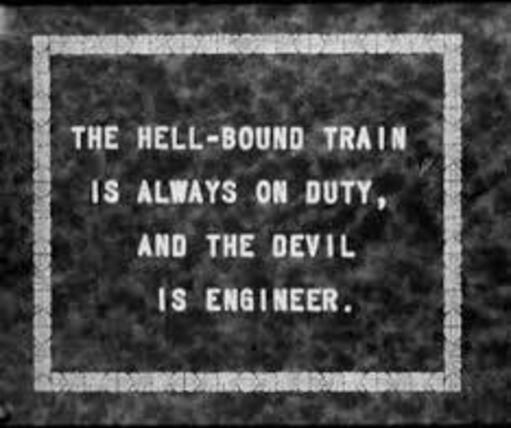
In exploring the history of silent film besides the usual suspects of the major producers occasionally we run into inspired amateurs who manage to leave a mark in spite of usually having tiny budgets and limited experience. This is especially true of filmmakers from marginalized groups such as Dorothea Mitchell, a Canadian woman from remote North Bay, Ontario (who I wrote about here),alized communities with examples including Dorothea Mitchell, a woman filmmaker in Northern Ontario, Canada (who I wrote Chinese American director James Leong, Christian filmmaker C.O. Baptista and the early films of African American filmmaker Oscar Micheaux (who I also wrote about here). Another oddity among African American filmmakers was the team of James and Eloyce Gist who made a trio of eccentric religious themed films noted for their Expressionistic imagery.
James (born 1907 in Chicago) and Eloyce Gist (born 1882 in Texas) were an African American married couple who around 1930 decided to use film as a medium to preach a religious message to a black audience. Despite having no known film experience they would make at least three films, one full length film ("Hellbound Train") and two shorts ("Verdict Not Guilty" and "Heaven Bound Travellers"), as silent films which were to shown in black churches and tent revivals including in meetings where James would narrate and preach while Eloyce would accompany on piano or organ. The films may have been shown in black owned theatres as well and promoted in the local black newspapers. Besides Black Churches they also received support from the NAACP who approved of the film's message of moral uplift.
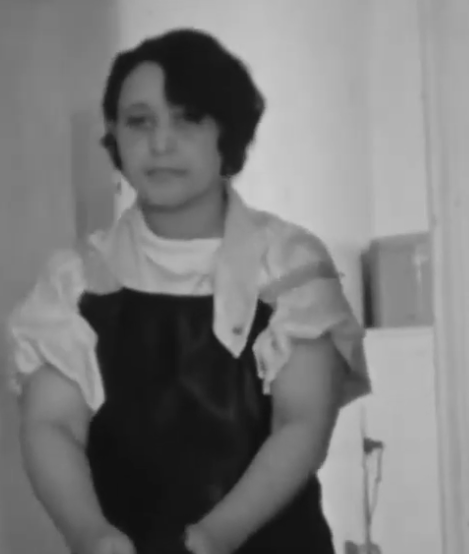
ELOYCE GIST
Exactly what the working relationship was between James and Eloyce is unclear. It is believed that James came up with the idea and wrote the script for the full length film "Hell Bound Train" and Eloyce polished the script as well as suggesting some of the staging and editing using her musical knowledge (she had a music degree from Howard University) as well as coming up with the soundtracks which do not survive. We do know that James took a leadership role which given the time and conservative religious attitudes is to be expected but it's worth noting that in letters about the films he took pains to refer to the films as "our films" rather than just his own. At the same time it's also safe to assume he was the driving force given their religious subject matter and the couple's own beliefs. While James was a traditional Christian, Eloyce was in fact a Bahai convert and not actually Christian at all.The Bahai are a Persian religion who split off from the Shia Muslims in the 19th century but while they do accept both the Old and New Testaments (along with the Koran) and she obviously had no problem with the message of the films, especially given their rather broad moral message, it's unlikely she would have come up with them on her own. Viewing the films now it's also apparent that there are significant differences between the two earlier films and the final film which we know she was most heavily involved with given that she actually stars in it.
As the title suggests "Hell Bound Train" uses an allegory about a train which carries the souls of sinners to Hell with various stops at places named for the various vices that will ensnare the sinful such as Drunkards' Town, Liar's Town and Gambler's Town etc. The visual images are straight-forward and simply show scenes of a train racing down the tracks intercut with scenes of the various vices and debauchery. Satan also shows up to drive the train and occasionally gloat over another fallen soul by dancing about and laughing. He is presented as a typical costumed Devil with horns, cape and trident, in fact his costume appears to be a simple pair of overalls with a cape and sewed on tail.
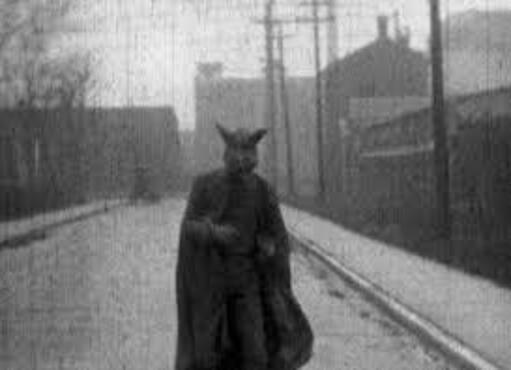
"HELLBOUND TRAIN" (1930);
The train is only shown in exterior shots with only the opening shot showing the Devil actually riding in the locomotive engine with the rest of the shots being exterior shots of the train rushing past suggesting the Gists were only able to get permission to shoot a few quick shots of the engine when it stopped but not any interior shots aside from a brief shot from a passenger car which looks like it was shot covertly suggesting they had to make do with simple exteriors for the rest of the train shots. The images of the rushing train actually serve as transition shots between the majority of scenes which show people engaged in the various vices that will get them a ride on the train. With their limited budget many of these scenes seem to have been shot using the same interiors.
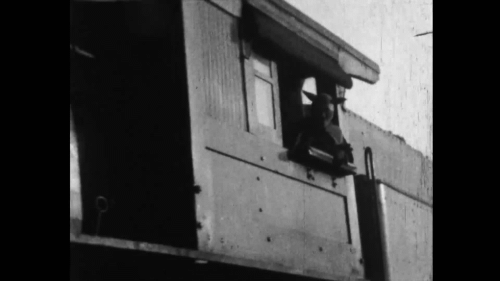
Further evidence of their limited budget as well as their lack of experience can be seen in the actual filming much of which was clearly shot using a cheap handheld camera which is sometimes noticeably shaky. Many of the interiors are also poorly lit. That these shots weren't reshot is probably another by-product of their low budget as all film stock and to be bought as well as developing costs and it's likely that they simply decided it was easier and cheaper to use one or two takes and make do with the best one.
The cast of the film are unbilled and unknown but were likely assembled from various church members some of whom may have also been amateur theatre players and choir members. It's possible Eloyce Gist is amongst them assuming James was holding the camera or directing or both which is likely considering the shaky hand-held nature of many shots Unlike many films made by black filmmakers which usually had all black casts and in which whites were rarely mentioned this film does have a few white characters but notably they are all figures of punitive authority such as police and prison guards.
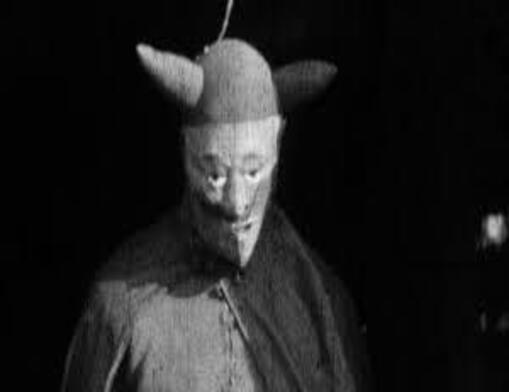
While these decisions are probably brought on by necessity rather than design to modern eyes it does give the film a Cinema Verite feel which suits the scenes where the film seems to be spying on people as they stumble into debauchery. A term that is usually used to describe the film is "surreal" with its scenes of the Devil prancing about hanging off the locomotive while enveloped in smoke but a better film genre to compare is Expressionism with its themes of supernatural forces and human suffering, alienation and damnation. Unlike the Surrealist and Dada films of directors like Bunuel, Dali or Hans Richter the story is straightforward and the characters behave as regular characters rather than existing in a fantasy land or dreamscape where the laws of physics and nature don't apply.
The imagery of a train going to either Heaven or Hell was a popular theme in Black Churches in the 1920's and 30's and would inspire some of the most successful Gospel records of the era including popular 1926 records by Rev J.M Gates, "Death's Black Train Is Coming" and "Hellbound Express Train" and Rev A.W Nix's "Black Diamond Express Train To Hell" in 1927. They were so popular that Nix would add three more records to the make a series and Gates would do at least three more of his own train songs. These records used the same imagery of a train making stops at stations that represent various sins and vices and it's highly likely that these records influenced the concept and script for this film. Although largely forgotten now by Jazz and Blues historians Gates was in fact possibly the most successful Black recording artist of the twenties recording an astonishing over two hundred records while Nix recorded fifty four so the Gists would have been well aware of them.
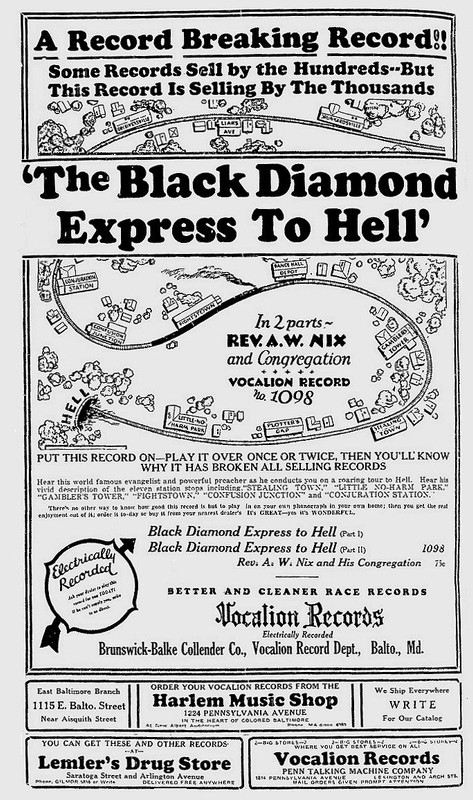
There would also be an even greater number of songs using imagery of a train going to Heaven including Sister Rosetta Tharpe's classic "This Train" and one can speculate that the popularity of the train imagery might be related to imagery going back to the Underground Railroad and the trains that later generations took north insearch of a better life. Note I used several of these records to assemble the soundtrack for this film.
REV A.W NIX ~ "BLACK DIAMOND EXPRESS TO HELL Pt1";
This film was considered long lost and forgotten until it was found mixed in with reels of two short films all of which were eventually reassembled and restored using letters from the Gists and contemporary accounts. Amongst the two shorts "Verdict Not Guilty" is believed to date to around 1933 and continues with the theme of judgement in the Afterlife.
"VERDICT NOT GUILTY" (1933);
This film could be seen as a sequel to "Hellbound Train" with the train taking souls to the afterlife while in the second film the actual judgement takes place. In this case the recently departed soul is a woman who is escorted to to be tried by St Peter while a Prosecutor and Advocate, both of whom are angels plead for and against her case. Scenes from her life are shown Some of the same sins from the first film are brought up including skipping church, having a child out of wedlock and card playing (Gists were apparently rather preoccupied by gambling). The same Devil shows up from the first film. In the end St Peter decides that she had repented and rules in her favour sending her to Heaven and banishing the Devil from court.
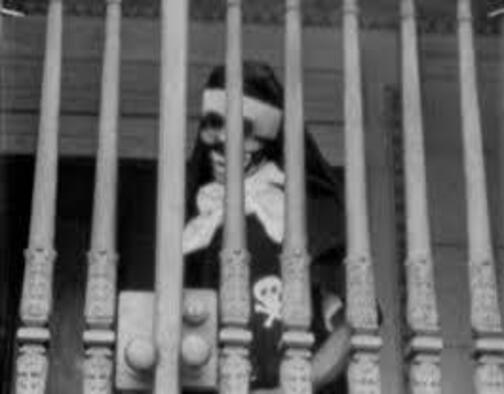
This film is similar both thematically and structurally from "Hellbound Train" with the plot being an excuse to string together a few scenes of sin with a finger wagging morality plea. This time the camera work is less shaky suggesting James Gist took the intervening three years to learn how to hold the camera steady, buy a tripod or hire a cameraman but this actually isn't a benefit as the film loses some of the accidental Cinema Verite feel of the first film although it does have even more Expressionist supernatural imagery. Once again all the characters are Black oddly except for St Peter who appears to be white.The cast are again unknown although it appears that the character of the recently departed woman is played by Eloyce Gist herself. One side note about the Devil character; when we first see him in a flashback scene he is wearing the same simple cape and overalls costume from the first film but when he shows up in court he is wearing a more flashy harlequin costume suggesting the first scene was probably originally shot for "Hellbound Train" but not used then edited into this film three years later.
The final film appears to date from circa 1935 and is notable for its differences from the previous films both in themes and execution as well as for clearly having Eloyce Gist herself as the lead actress.
"HEAVEN BOUND TRAVELLERS" (1935);
Unlike the previous films this one has a straightforward plot with little of their Christian mysticism. Eloyce Gist stars as a mother with a young daughter whose jealous husband wrongly suspects her of being unfaithful. He deserts her and her landlord evicts mother and child. They end up sleeping in the park until she prays and then gets a job as a maid and they can then afford to move into a new home. And that's it. Other than scenes of the Mother praying and reading the Bible there is there is no actual religious message here unless one counts that if one prays to God you'll get a new job which is not exactly spiritual message. Unlike in the previous films there is not even a suggestion that the Mother is even a sinner who needs to repent. This film is almost like a vaguely Christian Horatio Alger story for women. There is certainly none of the mystical and supernatural imagery of the first two films. Once again we return to the somewhat shaky handheld camera work of the first film.
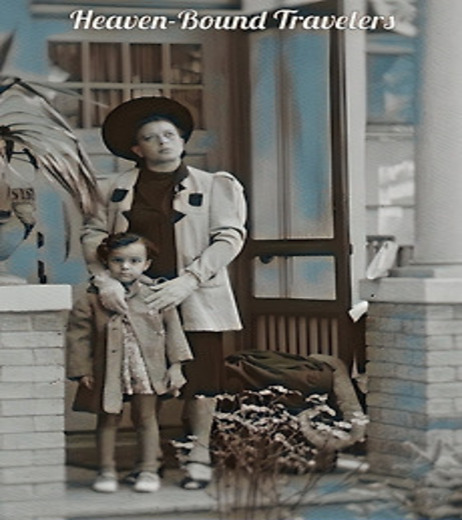
Besides it's short length this film ends abruptly and is probably missing footage. The different approach in its naturalistic theme and style is very different from the Expressionistic mysticism of "Hellbound Train" and "Verdict Not Guilty" and along with the presence of Eloyce herself as the lead suggests that she was the driving force on this film and probably wrote the script. The film's theme is more of a fairly generic morality play without the Christian fire & brimstone, Heaven and Hell of the first two films which fit with the preaching of James Gist and is probably reflects the sort of message the non-Christian Eloyce would be comfortable with that would have also been common in women's groups. In the speculation about the division of labour in the making of these given these differences we can assume that if Eloyce was largely responsible for this film than James was more responsible for the previous two films at the conceptual level while she played a role in co-writing the script and as a performer herself directing some of the actors.
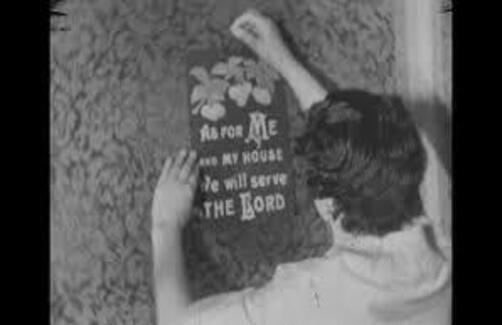
The Gists are not known to have made any other films before James died suddenly 1937 of pneumonia aged only 30. Eloyce would give up their film business and turn to writing including a novel and articles for black newspapers. She would also remarry twice living until 1974. By that time the Gist's films had been filed away and forgotten about until they were rediscovered in the 2000's in the Library of Congress. The films existed as thirty five fragments of 16mm film rolls in no particular order jumbled together with those of the two short films which then needed to be sorted out, restored and edited into coherent separate films working with the notes and letters left behind by the Gists and contemporary reports written in the Black press. Confusingly some of these reports are in fact wildly off base in some of their descriptions.
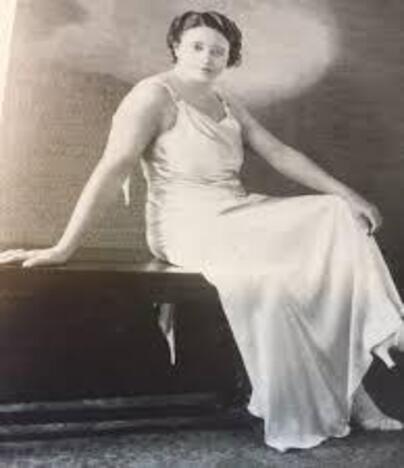
ELOYCE GIST
The entry in the Women's Film Pioneers Project describes "Hellbound Train" as simply "preaching temperance" and while it's true that drunkenness is one of the vices portrayed in the film that is hardly an accurate description of the film as a whole. Meanwhile "Verdict Not Guilty" is described as a "crime drama documentary on the criminal justice system" which is not even close to being correct. The films are further described as being "screened often by the NAACP" which suggests that whoever wrote these descriptions had not actually seen them and was relying on contemporary notices in NAACP newsletters which may have confused the films with some other film project. This also leaves open the possibility that there may indeed have been such a film made by the Gists which was lost or that the apparent lost footage for "Heaven Bound Travelers" may have contained such a plotline which is now also lost although that would certainly make for a very different film and certainly a more cinematic and ambitious one.
At any rate the Gists and their eccentric passion play film project has since become recognized as odd footnote in the early history of African American cinema.
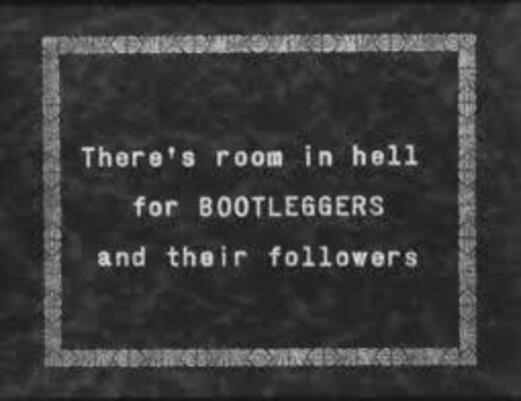
REV J.M GATES ~ "DEATH'S BLACK TRAIN IS COMING";
Songs used on the soundtrack for "Hellbound Train";
1. Rev J.M Gates ~ Hell Bound Express Train
2. The Jones Brothers ~ Gospel Train
3. Rev A.W Nix & John Schooley ~ Black Diamond Express Train To Hell Pts 1&2
4. Rev A.W Nix ~ Black Diamond Express Train To Hell Pts 1-4
5. The Belleville A Capella Choir ~ The Gospel Train
6. The Four Knights ~ The Gospel Train
7. Rev J.M Gates ~ Death's Black Train Is Coming
8. The Wright Bros ~ Gospel Train
9. The Norfolk Jubilee Quartet ~ The Death Train Is Coming
10. Rev J.M Gates ~ You Belong To That Funeral Train
11. Rev J.M Gates ~ The Racket Train
12. Rev Gary Davis & Sonny Terry ~ When The Train Comes Along
13. Mary Deloath ~ The Lord's Gospel Train
14. Sister Rosetta Tharpe ~ This Train
15. Rev Charlie Jackson ~ Morning Train
16. Willie Williams ~ Railroad Wreck
+++++++++++++++++++++++++++++++++++++++++++++++++
Somgs used for the soundtrack for "Verdict Not Guilty";
1. Vera Ward Hall & Dock Reed ~ Trouble So Hard
2. Rev J.M Ware ~ I Wouldn't Mind Dying
3. Elder J.E Burch & Choir ~ My Heart Keeps Singing
4. Unknown Leader & Choir ~ Who Built The Ark
+++++++++++++++++++++++++++++++++++++++++++++++++++++
Songs used on the soundtrack for "Heaven Bound Travellers"'
1. Sister O.M Terrell ~ I Want You To Lead Me Lord
2. The Staple Singers ~ The Last Time
3. Andy Mosely & Hogman Maxey ~ Brother Mosley Smote The Water
+++++++++++++++++++++++++++++++++++++++++++++++++
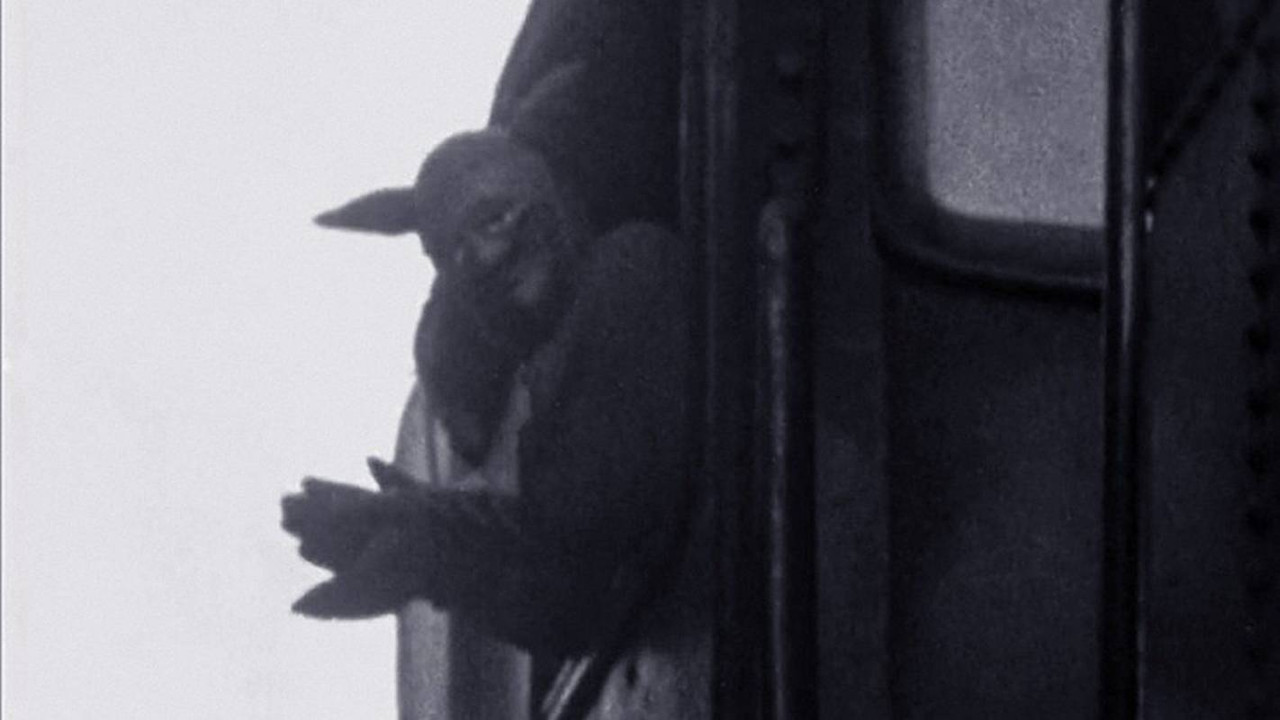

No comments:
Post a Comment